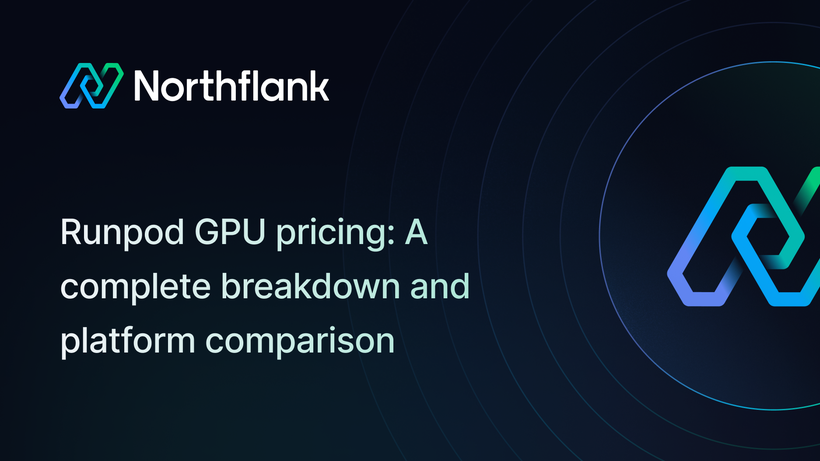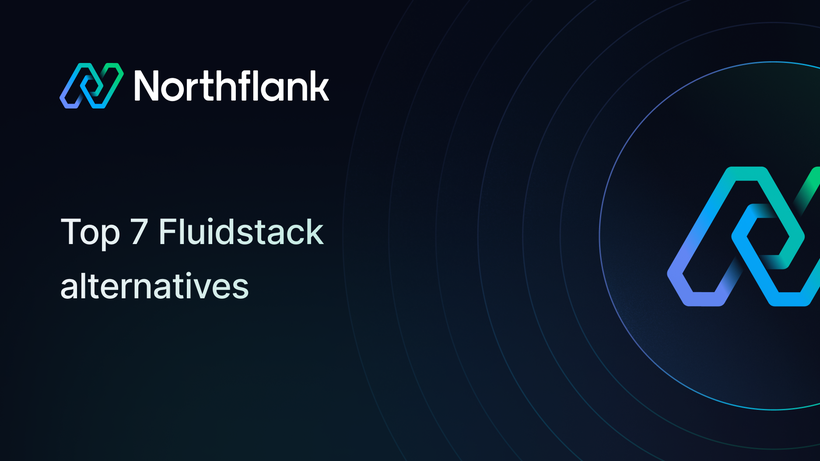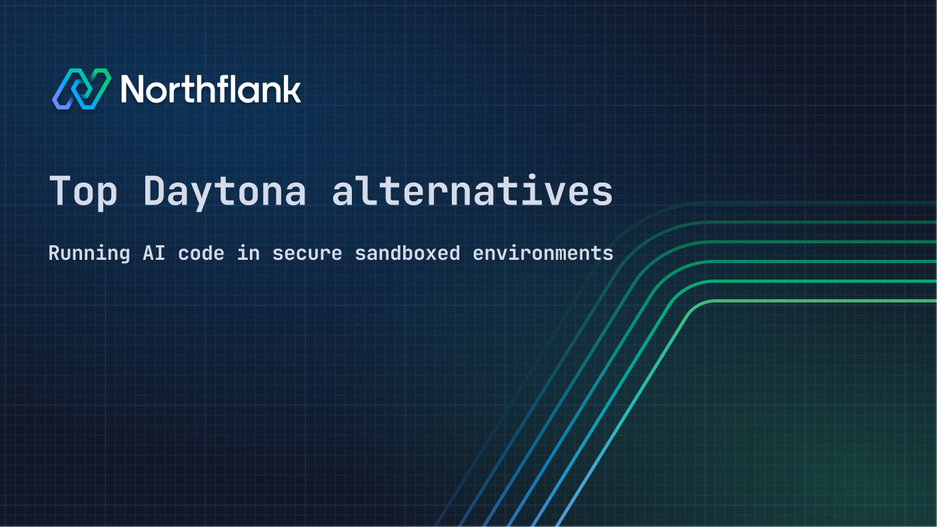

Top Daytona.io alternatives for running AI code in secure sandboxed environments
If you're building AI agents, developer tools, or code-executing platforms, at some point you have to run untrusted code: code you didn’t write, can’t predict, and shouldn’t trust.
Maybe it’s LLM-generated. Maybe it’s uploaded by a user. Either way, running it safely and reliably is hard. Especially when you’re doing it at scale.
It requires strong isolation, persistence, orchestration, observability, and infrastructure flexibility.
This article covers the top alternatives to Daytona.io comparing them across runtime isolation, startup latency, sandbox duration, Git and CI/CD integration, pricing, and real-world use cases.
We wrote a detailed explanation of container isolation and everything you need to know about it here. Use it as a primer before going deeper into Daytona alternatives.
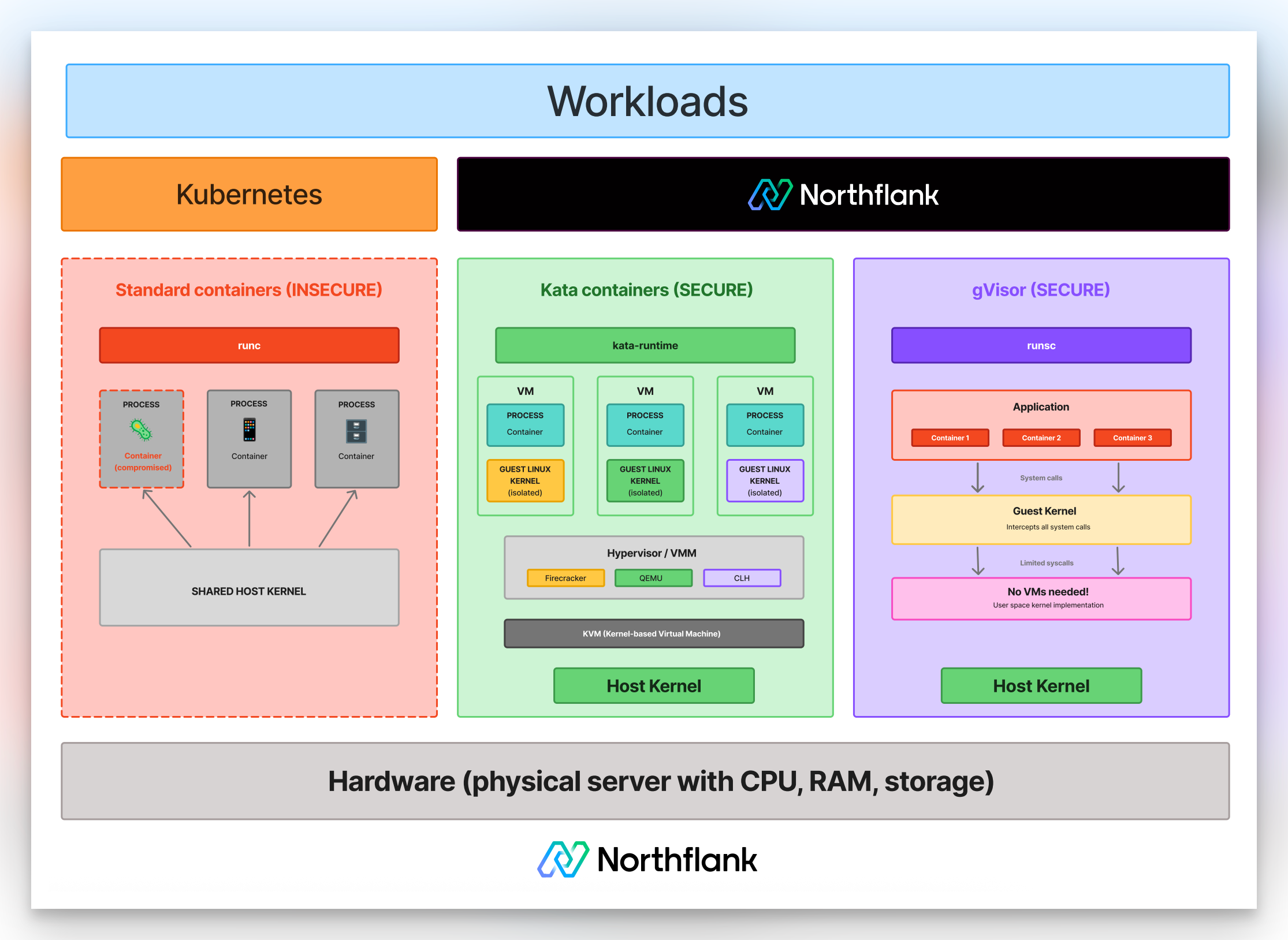
- Northflank offers production-proven Kata Containers powered microVMs, and gVisor, with full orchestration, GPU support, long-running jobs, Bring Your Own Cloud (BYOC), and runs your entire infrastructure, not just sandboxes.
- E2B.dev uses Firecracker microVMs with great persistence features but no self-hosting in production.
- Modal provides fast Python containers with gVisor isolation, ideal for ML workloads but Python-only.
- Vercel Sandbox uses Firecracker microVMs for development environments but with session limits.
- Cloudflare Workers uses V8 isolates for blazing-fast edge functions but no persistent state.
Daytona pivoted in February 2025 from development environments to become infrastructure for running AI-generated code. They provide sandboxes through an SDK that lets AI agents execute code in isolated environments.
Under the hood, Daytona's default configuration uses standard Docker containers, though they support enhanced isolation through Kata Containers and Sysbox when explicitly configured. This tiered approach means security depends heavily on your configuration choices.
Daytona is built for AI agent workflows, not comprehensive infrastructure.
If you're trying to run production workloads beyond just code snippets, like databases, long-running services, or GPU jobs, you'll need a more complete platform.
Daytona.io focuses specifically on AI agent code execution, which may be too narrow if you need:
- A platform that runs ALL your workloads (not just AI sandboxes)
- Production-proven infrastructure with millions of workloads in the wild
- True multi-tenant isolation without manual configuration
- Support for databases, persistent services, and full applications
- Enterprise features like Bring Your Own Cloud (BYOC), compliance, and granular access controls
At-a-glance comparison of Daytona.io alternatives
| Platform | Isolation type | Persistent sandboxes | BYOC / Self-hosting | Best for |
|---|---|---|---|---|
| Northflank | microVM (Kata Containers using CLH) and gVisor | Unlimited | Yes | Complete cloud platform + secure AI infra |
| E2B.dev | microVM (Firecracker) | Yes | No | AI agents and codegen tools |
| Modal | Container (gVisor) | Limited | No | Python ML workloads |
| Vercel Sandbox | microVM (Firecracker) | No | No | Dev environment previews |
| Cloudflare workers | V8 Isolates | No | No | Edge functions, API middleware |
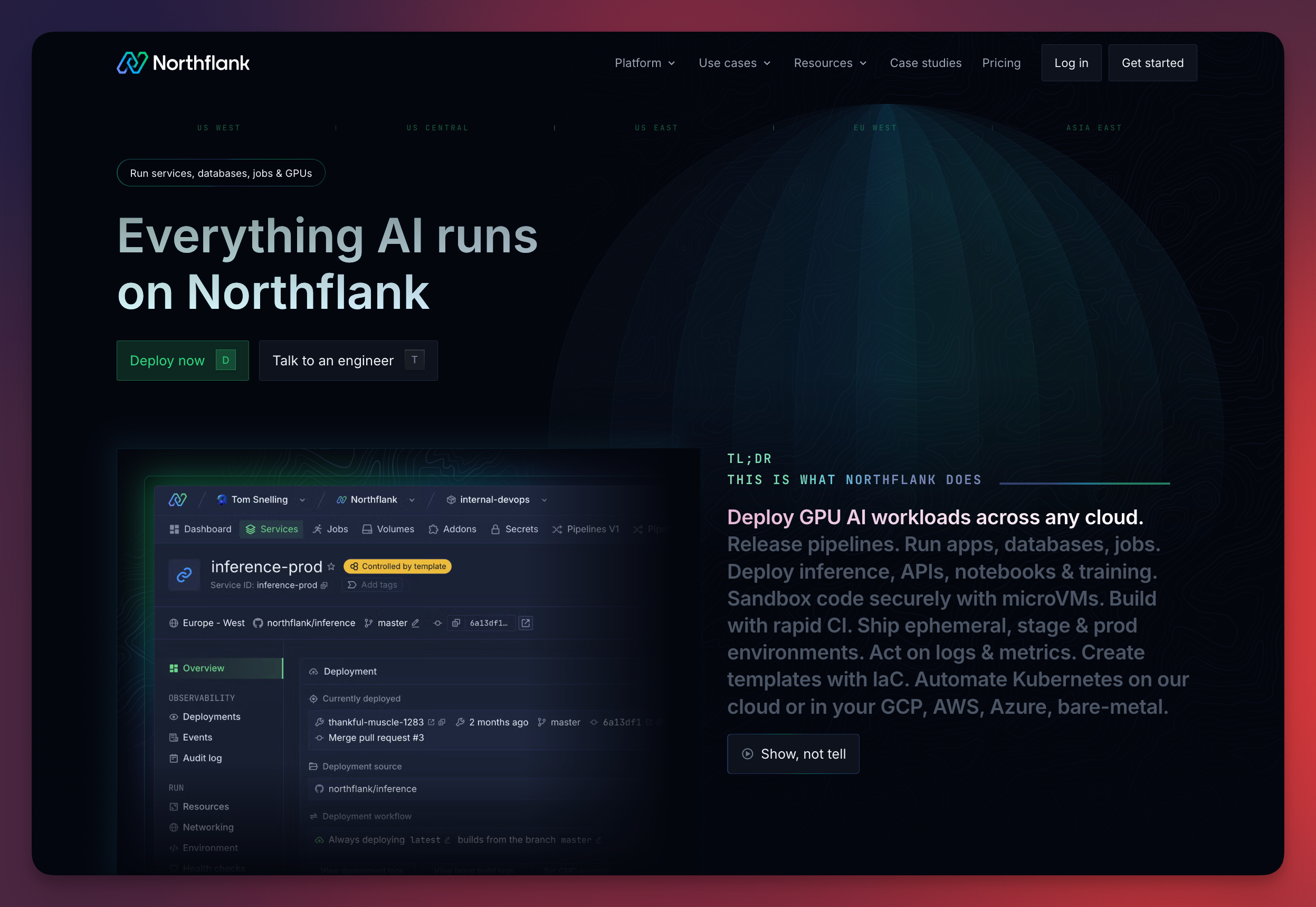
Northflank operates over 2 million isolated workloads every month and has been in production since 2019. Unlike platforms built just for AI sandboxes, Northflank is a complete cloud platform that happens to excel at secure code execution.
Pros:
- Technologies like Kata Containers with Cloud Hypervisor (CLH) and gVisor, giving you flexibility in your secure compute stack wherever you need it: AWS, GCP, Azure, bare-metal.
- Runs everything: containers, databases, cron jobs, AND secure sandboxes
- Companies like Writer, Sentry, and others have leveraged Northflank's secure runtime to run multi-tenant customer deployments for untrusted code at scale
- Full CI/CD, GitOps, and infrastructure automation built-in
- Transparent, usage-based billing
- True production scale with enterprise features
Cons:
- More comprehensive than pure sandbox-only solutions, full platform may be unnecessary if you only need ephemeral sandboxes
- Requires understanding of projects/services model
What sets Northflank apart is that it's not just a sandboxing tool, it's a complete platform. You can run your AI agents, your backend APIs, your databases, and your GPU inference all in one place with consistent security and orchestration.
Building a secure sandboxing platform with Firecracker and Kubernetes isn't a weekend project. It can take a team months or longer, and the complexity doesn't go away, it becomes something you have to operate and maintain every day. Northflank has already solved this at scale.
E2B focuses specifically on providing sandboxes for AI applications through Firecracker microVMs. They've built a solid SDK for ephemeral and persistent sandbox management.
Pros:
- True microVM isolation via Firecracker
- Excellent persistence features (up to 24hr active, 30 days paused)
- Python, JavaScript/TypeScript, R, Java, Bash support
- Clean SDK design for AI agent integration
Cons:
- Limited to sandbox use cases only
- Self-hosting still experimental (not production-ready)
- No transparency on pricing
- Can't run your other infrastructure
E2B is great if you ONLY need sandboxes for AI agents. But if you want to run your complete application stack with the same security guarantees, you'll need additional platforms.

Modal uses gVisor containers to provide secure Python execution environments. They've optimized heavily for ML/AI workloads with excellent GPU support.
Pros:
- Sub-second container starts with custom Rust runtime
- Comprehensive GPU support (T4 to H200)
- Good for batch jobs and model inference
- Container keep-alive and checkpointing features
Cons:
- Python-only (no other languages for function definition)
- No BYOC or self-hosting options
- Limited to serverless model (no persistent services)
- Opaque pricing structure
Modal excels at Python ML workloads but isn't suitable if you need multi-language support or want to run persistent services alongside your AI workloads.
Vercel's sandbox solution provides Firecracker-based isolation for development environments, leveraging their "Hive" infrastructure that powers millions of builds.
Pros:
- Fast microVM provisioning
- Node.js and Python support
- Good for testing and preview environments
- Integrated with Vercel's ecosystem
Cons:
- 45-minute maximum runtime
- No persistence between sessions
- Limited to development use cases
- Not designed for production AI workloads
Vercel Sandbox works well for development workflows but isn't built for production AI agent execution at scale.
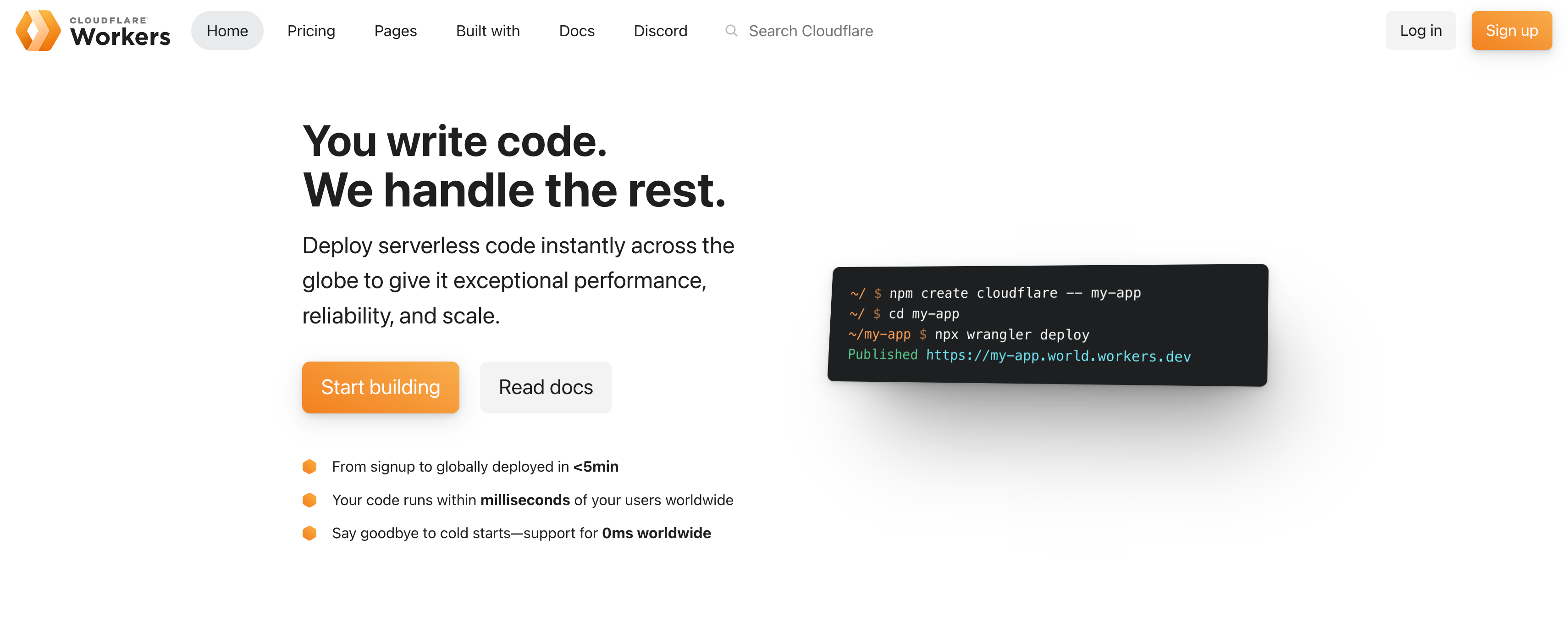
Cloudflare takes a completely different approach with V8 isolates, the same technology that powers Chrome's tab isolation.
Pros:
- Isolates have such a small memory footprint that we, at least, can afford to only bill you while your code is actually executing
- No cold starts, always warm
- 200+ global edge locations
- Excellent for stateless functions
Cons:
- JavaScript/WebAssembly only
- No persistent state
- No GPU support
- Not suitable for long-running processes
Workers excel at edge computing but can't handle stateful AI workloads or non-JavaScript languages.
The fundamental difference is scope: while other platforms solve pieces of the puzzle, Northflank provides the complete infrastructure layer for modern applications, including secure AI execution.
With Northflank, you're not cobbling together different services:
- Run your AI agents in secure microVMs
- Deploy your backend APIs in the same platform
- Manage databases with automated backups
- Schedule cron jobs for batch processing
- Scale GPU workloads for model inference
- All with consistent security, networking, and observability
Companies like Writer, Sentry, and others have leveraged Northflank's secure runtime to run multi-tenant customer deployments for untrusted code at scale.
Unlike single-cloud or hosted-only solutions, Northflank offers:
- Managed cloud: Zero setup, just deploy
- BYOC: Run in your AWS, GCP, Azure, or bare metal
- Multi-region: Deploy globally with consistent experience
- Any runtime: Not locked to specific languages or frameworks
While sandbox-specific tools often lack enterprise features, Northflank includes:
- SSO and directory sync
- Granular RBAC
- Audit logging and compliance tools
- SLAs and dedicated support
If you're evaluating platforms for running AI-generated code, the key question isn't just "can it sandbox code?" it's "can it run my entire application securely?"
Specialized sandboxing tools have their place, but modern AI applications need more than just isolated code execution.
Northflank leads because it's the only platform that combines:
- Enterprise-grade microVM isolation (Kata containers using CLH)
- A complete platform for all your workloads
- Production scale (2M+ microVMs monthly)
- True infrastructure flexibility (managed or BYOC)
- Transparent, predictable pricing
Don't settle for a sandbox when you need a platform.
With Northflank, secure AI execution is just one part of a comprehensive infrastructure solution that grows with your needs.
